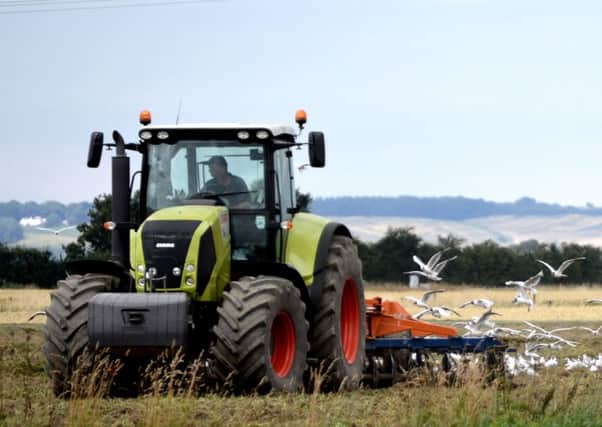Feature: Modern day farming - farm manager’s perspective


Then there’s eye-watering capital investment needed for machinery - £60,000 for a tractor, £300,000 for a combine harvester - and the seemingly never-ending stream of food scandals, the blame for which all too often gets laid at the farm gate.
Now, with the main harvest in, the cattle being brought in for the winter and the autumn ploughing started ready for sowing rape and winter wheat, James Waller-Davies assess the health of Lincolnshire’s agriculture in an ever-changing and challenging environment...
Advertisement
Hide AdAdvertisement
Hide AdGary White has 35 years’ experience in farming and is the senior farms manager at JW Grants.
Grants farm 5,000 acres at Old Leake, outside Boston, producing arable and vegetables.
According to Gary, weather has been the biggest factor for Grants.
“It was a cold spring and then we had a late and wet harvest. Harvest time was very challenging this year,” he explains.
Advertisement
Hide AdAdvertisement
Hide AdThe cold spring also slowed early plant growth and some crops were particularly hard hit at times.
“There were lots of issues with cauliflower, which caused rot. There was a lot of wastage,” he said. “Overall though, 2015 has been an average year on the whole. Yields are slightly higher than average and the grain harvest came in fairly dry.”
Good yields and a dry harvest should be good news for farms like Grants. But a good harvest is only half the story. Wheat and barley are globally traded commodities and the prices in Lincolnshire are dependent on production in countries as far away as Brazil, China, the United States and Russia.
Gary explained: “The biggest issues now are rising costs in an increasingly global commodity market. It’s not even a European market anymore and the UK is such a small player in the global market.”
Advertisement
Hide AdAdvertisement
Hide AdIn this global market a good year for Lincolnshire doesn’t necessarily translate into good prices and this year both wheat and barley prices are at five-year lows. But just to highlight how much local farmers are linked to the rest of the world, fears of dry weather in the US and USSR has given a boost to October prices.
It’s far removed from the days when the farmer harvested his crop, took it to his local windmill and bartered a price with the miller.